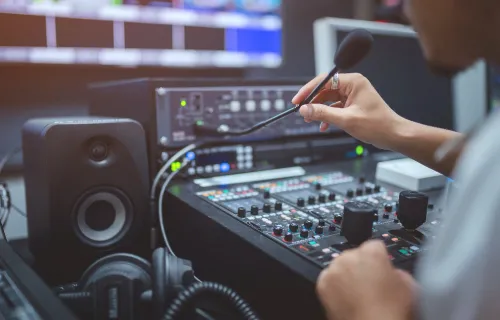Contemporary radio production is integrating a broader range of audio sources than ever before. From on-location interviews and home recordings to smartphone footage and video calls, broadcasters must work with inconsistently captured content in environments of varying quality. The result is a growing operational burden for teams tasked with cleaning up and preparing content for broadcast.
At the same time, pressure is mounting to increase efficiency without compromising output standards. For many, this is where AI is proving to be valuable. In both live and recorded scenarios, AI-powered tools help automate routine tasks, enhance audio clarity and shorten turnaround times. These capabilities are becoming essential for radio teams managing high volumes of content on tight schedules.
As a long-standing technology partner to the media industry, CGI is investing in AI across our dira solutions suite to support these needs. By combining native development with strategic integrations, we enable radio broadcasters to adopt more intelligent, automated workflows— delivering consistent quality and greater agility to their operations.
CGI and ai-coustics bring studio-quality audio to everyday workflows
Radio broadcasters around the world use dira solutions to manage content creation, production and playout. As the need to deliver more with less accelerates, our embedded AI capabilities improve output quality while streamlining production with tools designed to enhance audio captured in uncontrolled environments, and without the need for specialist manual intervention.
ai-coustics, a CGI partner focused on AI-driven speech enhancement, is an example of this capability. Its models are trained on a self-recorded dataset comprised of several thousand hours of high-quality speech in over 80 languages, covering upwards of 500 distinct noise types. The result is a system that automatically detects and corrects common issues, such as background noise, clipping, codec artifacts and room reverb, while elevating low-fidelity recordings to near-studio quality. For our dira clients, the benefit is seamless functionality.
For real-time processing, you can deploy ai-coustics via API for file-based enhancement or through an on-device VST plugin implemented into our CGI dira Startrack audio editor. This supports a broad range of use cases, from news bulletins and interviews to archive restoration and live contributions. Benchmark testing using SIGMOS—a metric designed to assess speech quality and intelligibility with a high degree of accuracy—shows that ai-coustics consistently outperforms several established providers.
Integrated intelligence: The future of radio operations
The use of AI in radio production forms part of a broader shift towards automation and intelligent workflows across the media sector. As content volumes rise and turnaround times shrink, automation is becoming critical to maintaining both speed and consistency without requiring additional talent.
Working with AI specialists such as ai-coustics supports our long-term strategy to enable more flexible and scalable production, providing broadcasters with advanced capabilities without the need to adapt existing infrastructure.
It also reflects a broader trend. Expectations are rising for production systems to deliver high-quality results with leaner, more adaptable setups. Whether supporting remote production, accelerating delivery or enhancing baseline audio quality, AI is quickly becoming a practical solution to real operational challenges.
Learn more about our solutions and services for professional radio workflows and media management, as well as our leading platform for newsroom and planning systems.
* This article is based on the Radio World advertorial: How CGI is using AI to redefine radio production quality.






